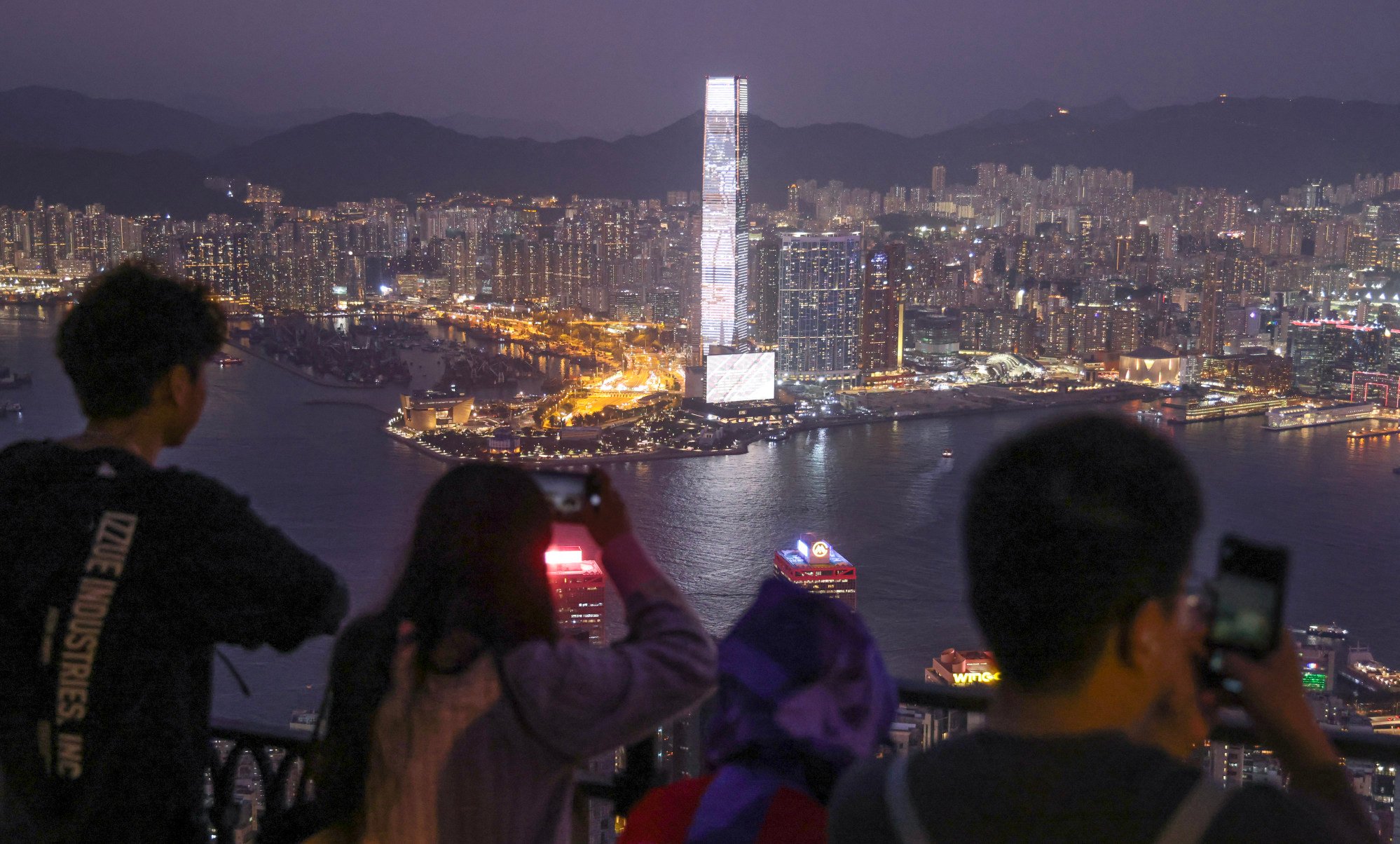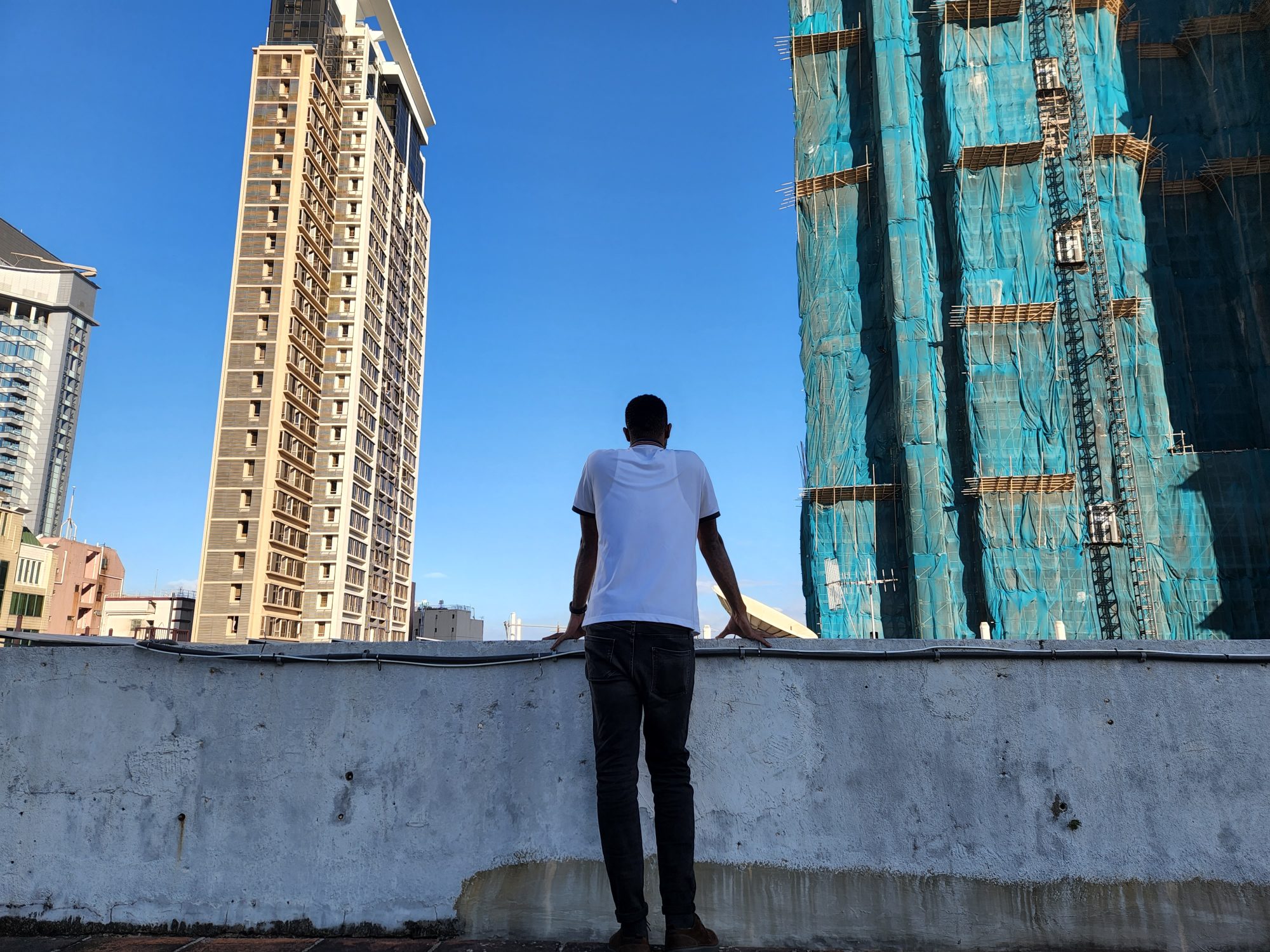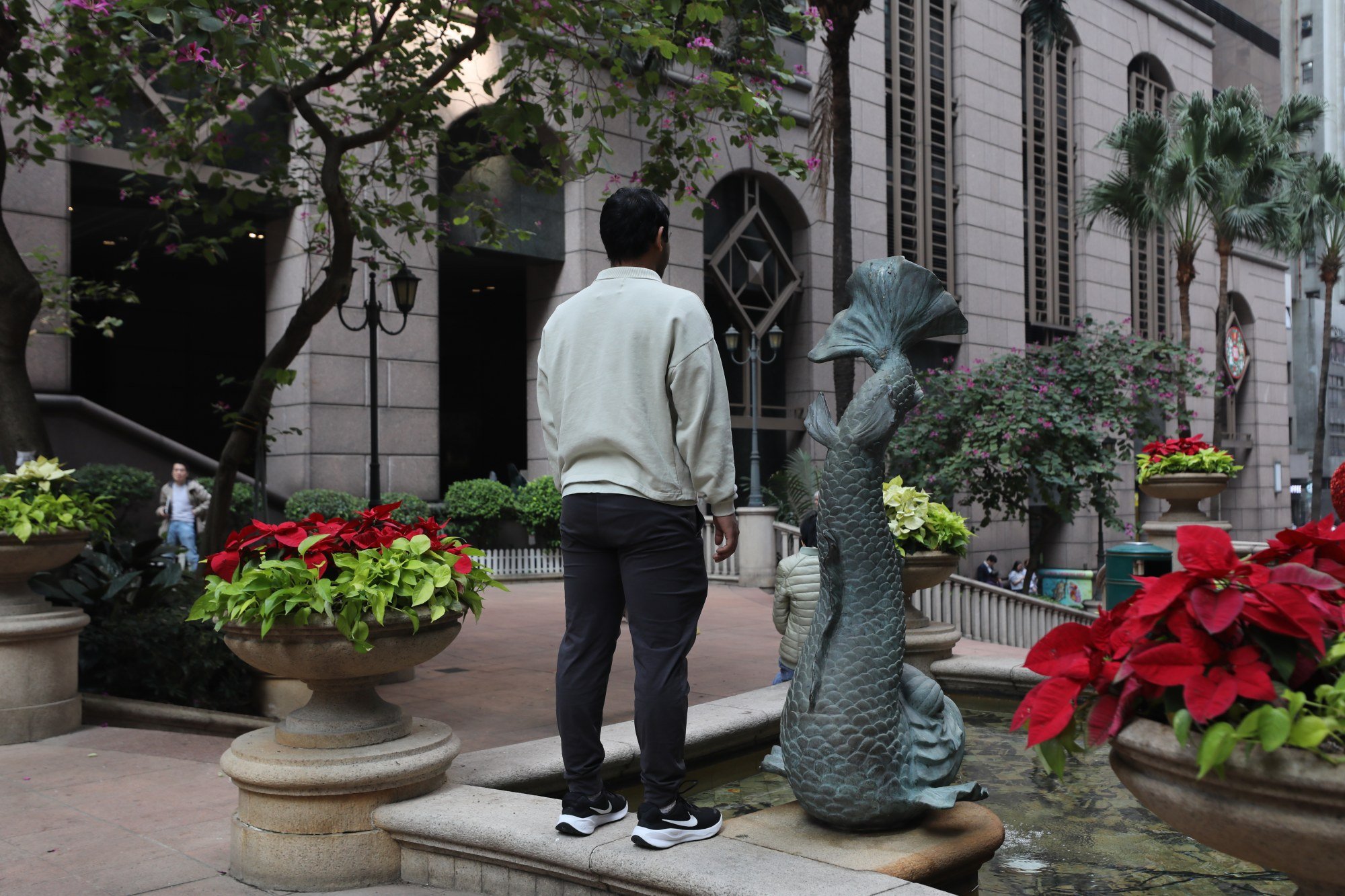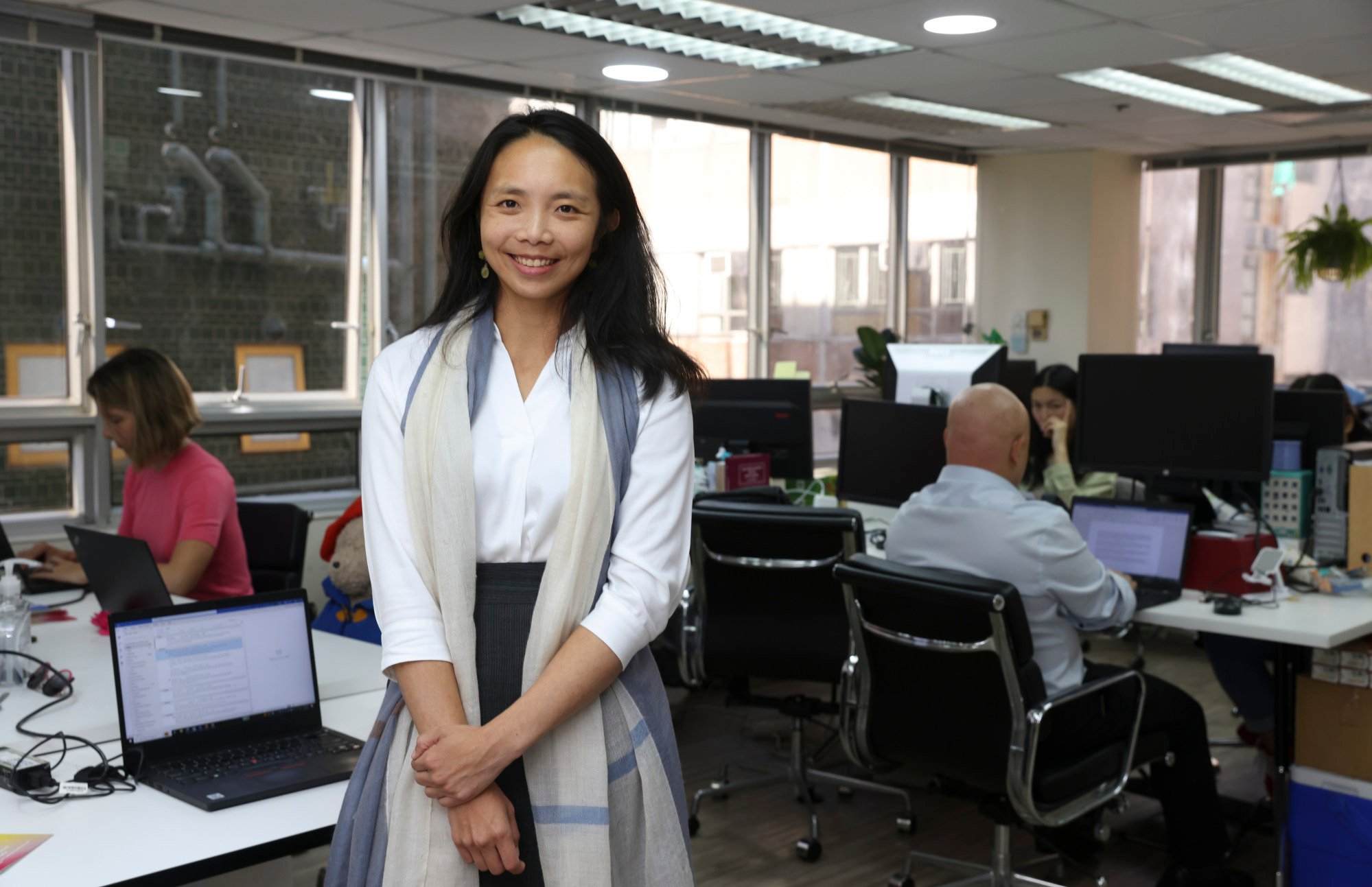Mohammad Taqi prayed for his life as a tropical storm battered the small boat ferrying him and 10 other men across the sea from mainland China into Hong Kong.
They were all illegal arrivals from Pakistan, hoping to pursue asylum claims in the city to evade alleged security threats back home.
“We were stuck at sea for about three hours,” Taqi, 38, recalled. “The guy steering the boat – a young man from the mainland – said the storm might mean fewer police patrolling the seas.”
Do you have questions about the biggest topics and trends from around the world? Get the answers with SCMP Knowledge, our new platform of curated content with explainers, FAQs, analyses and infographics brought to you by our award-winning team.
It was about 2am when they arrived at Tung Chung, on Lantau Island.
“When we got off, the guy driving the boat just pointed and said, ‘Go that way,’” Taqi said.

As the craft sped away, the 11 men, aged between 20 and 30, began trekking through the countryside in the storm and after several hours found themselves in a residential area. Police swooped in on them and when arrested, all admitted they had just entered Hong Kong illegally.
Fifteen years later, Taqi is still in Hong Kong and awaiting his asylum claim. His initial application was rejected and he is waiting for the result of an appeal, but he has no idea when he will find out. His wife, whom he met in Hong Kong, had her claim substantiated and has been resettled in Canada.
Illegal immigration surged in the second half of last year after borders reopened following the Covid-19 pandemic, putting the spotlight on asylum seekers such as Taqi and their right to stay and work in the city and whether they are abusing the system.
Taqi is one of around 14,700 asylum seekers waiting for the results of their claims through the city’s unified screening mechanism or appeal system, which marked its 10th year this month.
Hong Kong does not grant asylum but offers “non-refoulement” protection, a pledge not to send individuals back to countries where their life is in danger. Those who manage to prove their claim for refugee status are handled by a UN agency and must wait for host countries – mainly the United States and Canada – to accept them.
As people like Taqi await their fate, critics have questioned the validity of the asylum seekers’ claims and whether the process could be tightened further to deter others from thinking of Hong Kong as a safe place of refuge.
The cost on the public coffers has been steadily rising, hitting HK$1 billion (US$127.8 million) last year, prompting yet more questions.
Why Hong Kong?
Taqi said he paid an agent in the city of Gujrat 150,000 Pakistani rupees – equivalent to about US$1,750 at the time – to get him a mainland tourist visa, a flight to Kashgar in Xinjiang and a train to Shenzhen via Urumqi. The agent told him to go to a hotel in Shenzhen to meet a man who would get him into Hong Kong for an additional 150,000 Pakistani rupees.
The route was also chosen because of the lower costs and more accommodating schedules of flights into Xinjiang at the time.
Another asylum seeker, Afghan Imran Hussain, 27, said he paid about 1.8 million Pakistani rupees (about US$10,000 at the time) to an agent for a business visa and flight to Guangzhou, before he was also asked to go to a hotel in Shenzhen, where a man would get him into Hong Kong.
Hussain, who said he fled Pakistan in 2018 after being kidnapped three times by the Taliban even after moving cities, said a Chinese man he met at the hotel drove him to a “quiet spot” along the border where he climbed a tree and jumped over an 18-foot wall to sneak into Hong Kong.
“When I hit the ground, I just started running,” said Hussain who had his non-refoulement claim later substantiated and was resettled to Vancouver, Canada, in 2022.
Hussain is one of the exceptions. Up to last December, only 3o5 people had succeeded in their refugee claims since 2014, representing just 1.2 per cent of the 23,617 who had tried since the mechanism was launched. Successful claimants have come from Pakistan, Egypt, Afghanistan, Yemen, Rwanda, Somalia, Sri Lanka and Bangladesh.
23 foreigners arrested in Hong Kong over illegal food delivery work
Hong Kong does not grant asylum because it has not signed the 1951 UN Refugee Convention. Among convention signatory countries in Asia, Japan’s acceptance rate of refugees remained below 1 per cent between 2001 and 2020, while South Korea recorded only 2 per cent in 2022.
The ethnically homogenous populations of the two countries, which have a low acceptance rate, make them appear to be less attractive destinations for asylum seekers. They are also less accessible than Hong Kong given their different visa rules and travel routes.
Both Taqi and Hussain said they chose Hong Kong because they heard it was safe and, crucially, it was easy to get a visa to visit the mainland.
Jama Ali*, 33, took a different route. He arrived in Hong Kong from East Africa in January 2014 on his first-ever flight, fleeing from his home country, where he said he was persecuted for belonging to a minority clan. Having filed his refugee claim in May that year, it was not until 2016 that Ali was invited to his first screening interview. His claim was rejected around four months later.

Ali appealed the decision with the help of a human rights lawyer and attended multiple hearings in late 2017, but his claim was again rejected in March 2018. He and his lawyer spent the next five years requesting a judicial review in the courts until deciding to lodge a subsequent claim for a complete re-evaluation of his circumstances.
“I feel like I don’t have a choice whether I stay here at all, because if I had a choice, I might go somewhere else or go back to my country safely,” Ali said.
Authorities launched the mechanism for non-refoulement claims in March 2014, after a series of judicial reviews found the government did not do enough to ensure the procedural rights of asylum seekers.
Before then, the Hong Kong arm of the United Nations High Commissioner for Refugees was responsible for determining asylum claims and arranging resettlement.
The government had a separate screening procedure for those who claimed deportation would cause grave bodily harm under the Convention Against Torture.
The mechanism was established to evaluate a wider range of threats including cruel, inhuman or degrading treatment, punishment and persecution, not just torture.
People with valid visas cannot apply for non-refoulement protection. Only those facing deportation can file claims. The Immigration Department vets all applications, while rejected claimants can appeal to the independent Torture Claims Appeal Board.
If claimants lose their appeals, they can request a judicial review in court. If they lose again, they can launch a subsequent claim with the government if new safety threats arise in their situation. They can seek another judicial review if this subsequent claim is rejected.
According to the Security Bureau, the department now takes around 10 weeks to process a claim, compared with 25 weeks in the early years of the system, after screening procedures were streamlined and more manpower was deployed.
“As a result, the once accumulated backlog of some 11,000 claims pending screening by the Immigration Department was generally cleared in early 2019. New claims received can now be handled instantly,” a bureau spokeswoman said.
For the appeal board, each case takes around seven months to process and the bureau said it aimed to reduce the process to four months.
After years, most claimants are returned to their countries.
Before the mechanism’s establishment, the government spent HK$393 million in 2012-13 to process torture claims, fund legal support for claimants and provide humanitarian subsidies.
Expenses have steadily risen since then as the government had to handle a backlog of torture claims transferred to the new system in the early years, as well as expanded responsibilities over asylum seekers.
The bureau estimated about HK$1 billion was spent in the 2022-2023 financial year.
The Social Welfare Department provides claimants with HK$3,200 per person per month while they remain in Hong Kong – HK$1,800 is paid directly to landlords for rent and utilities and HK$1,200 is given as food vouchers to be only spent at ParknShop stores. A HK$200 transport allowance is also provided.
Former policeman Peter De Souza*, has lived in a 118 sq ft subdivided flat in Yau Ma Tei for the past five years after fleeing India following a death threat from his superior for disobeying an order eight years ago.
He shares the monthly HK$3,300 rent with another asylum seeker. The room is so cramped that both of them cannot sit on the floor at the same time. Bedbugs and rats are regular squatters in the tiny place they call home.
De Souza, 38, whose case is at the judicial appeal stage, must report to the Immigration Department in Tuen Mun every two weeks. That and monthly treatment for dental problems at the clinic of a volunteer dentist in Chai Wan use up most of his transport allowance, leaving him reliant on an additional HK$800 handout from an NGO each month to cover his remaining expenses.
“It’s not enough, not the full allowance or even the transport money. Without the non-governmental organisations, we cannot survive in Hong Kong,” he said.
De Souza said he had no idea about asylum claims when he fled. He only wanted to leave as soon as he could and he bought a ticket to Hong Kong as it was one of the places which did not require him to have a prior visa. A friend had also tried to offer him a job in the city before.
“I didn’t have any connections in Hong Kong, I only knew that some Indians, especially those from my state, are well-settled in Hong Kong,” he said.
Others, such as 22-year-old student Aaron Singh, arrived as children and grew up wondering why they were denied opportunities. His parents brought him to the city as a six-year-old in 2008 to seek asylum, and are currently appealing against a rejection of a judicial review over their case.
He said he had to skip a number of school trips overseas, missing chances to apply for sports scholarships in the US and, now, mandatory clinical placements for his physiotherapy degree.
“[My mother] just said we cannot join because of restrictions ... I would also get upset saying, ‘Why did she put me in this type of situation?’ Because I would also want to be similar to other kids,” said Singh, who does not hold a Hong Kong identity card and cannot work after graduating.

Between cost and compassion
As their cases drag on, and with the recent surge in illegal immigrants, questions have been reignited again on whether there is abuse of the loopholes in the system, allowing many to work here for years as cheap labour operating in the shadow economy.
But non-profit groups helping the claimants said that based on their experience, most asylum seekers were genuine cases not out to exploit the system for economic gain even if some took on illegal work to support themselves. They did this out of just the pressure to survive, they said.
The NGOs also said it was difficult to track the whereabouts or the fate of the rejected cases after they were repatriated, as many would have changed their phone numbers or lived in places with unreliable internet access.
Lynette Nam Yuk, executive director of NGO Justice Centre Hong Kong, said: “People don’t just leave their countries and come to Hong Kong with no security or understanding of the landscape, unless it’s more than just economic migration.”

Human rights lawyer Mark Daly argued that concerns of abuse should not discredit the availability of legal channels or the legitimacy of asylum seekers’ claims as a whole, as the system was set up to sift through applications including bogus ones.
“There are ones who probably don’t have a very good claim, but they have serious problems, so they need legal advice on that. They might not meet the strict legal definitions of refugee, but they’re not intentionally going to abuse the system,” Daly said.
But some politicians have long accused claimants of taking advantage of the long processing times to work illegally in the city and draining public resources in the process.
Lawmaker Simon Lee Hoey, who released a study on the social impact of asylum seekers in the city last November, questioned the motives of claimants when so few were deemed to have legitimate claims under the mechanism.
“When we look at the countries of origin of those people, most of them aren’t from places under active armed conflict, but mostly from economically less developed areas within the region ... most of them don’t truly fulfil the criteria as a refugee,” Lee said.
Lawmaker Lai Tung-kwok, a former security chief who introduced the screening mechanism during his term in office, told the Post the slow pace of handling cases stemmed from the overwhelming number of judicial review applications through multiple levels of the courts, rather than government sluggishness.
The judiciary said it received 2,089 applications for leave for judicial review at the Court of First Instance last year, with 34 granted.
In the same period, the Court of Appeal and the Court of Final Appeal saw 497 and 307 requests to examine rejections for judicial review respectively, with four appeals accepted at the Court of Appeal.
Representatives of asylum seekers said most successful claims were accepted during the appeal stage.
Currently, asylum seekers are given publicly funded legal help upon their application, but they have to find their own lawyers or go unrepresented if they wish to challenge the government or the appeal board.
Nam argued that taking twice-rejected cases to judicial review was a way to expand the understanding of legitimate grounds for protection as the system was still based on legal concepts from decades ago based on the conditions of displacement after the second world war, meaning that threats such as gender-based violence would be neglected.
She said she had observed that sometimes decision-makers in the Immigration Department and the appeal board did not seem to grasp the nuances and context of the circumstances claimants faced.
The bureau spokeswoman said case officers from the department were taught by legal experts before they took up their duties, with in-service training provided as well.
She said adjudicators on the appeal board were all former judges and magistrates or practising lawyers, and had an induction programme and refresher sharing sessions.
“The overall policy objective of handling non-refoulement claims ... is to ensure as far as possible high efficiency in processing the claims and relevant appeals while meeting the high standards of fairness required by law and to remove unsubstantiated claimants from Hong Kong as soon as possible,” the spokeswoman said.
‘Dire situation’: Hong Kong urged to show compassion to ill asylum seekers
Nam said to speed up the screening process, the government would also need to ensure fairness in its decisions to prevent rejected cases from being bounced back to the courts.
“And what that pulley looks like is training decision-makers and providing more quality control of the legal representation that the government is funding, so that cases are actually fully heard and fairly heard in the first place,” Nam said.
She added that she believed Hong Kong society did not lack compassion in recognising the hardships faced by those fleeing from persecution.
“It’s not an issue of whether we’re a compassionate society, it’s how we ensure that compassion is reflected in the processes that we talk about,” Nam said.
*Names changed at interviewees’ request
More from South China Morning Post:
- ‘At the bottom of priority list’: asylum seekers in Hong Kong wait up to 20 years for host countries to take them, despite clearing local checks
- 23 asylum seekers arrested in Hong Kong over working illegally for major food delivery platforms
For the latest news from the South China Morning Post download our mobile app. Copyright 2024.





